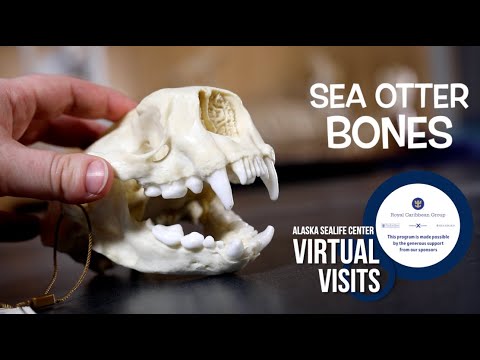Summary:
1. Sea Otter Teeth: Unique and Fascinating Structures
2. Using Teeth and Bones to Estimate Age in Sea Otter Pups
3. The Importance of Sea Otter Conservation and Rehabilitation Efforts
4. Sponsors and Supporters of ASIC’s Virtual Visit Program
5. The Excitement of Exploring Sea Otter Bones and Teeth at ASCL
Sea Otter Bones Part 1: Teeth!
Welcome to the fascinating world of sea otter bones and teeth! In this blog article, we will dive into the unique and intriguing aspects of sea otter teeth and how they can help us estimate the age of these adorable marine mammals. Join ASLC educator Katie and veterinary assistant Hanna as they explore the wonders of sea otter dental structures.
Sea Otter Teeth: Unique and Fascinating Structures
Did you know that sea otters have some of the most interesting teeth in the animal kingdom? These remarkable creatures possess four types of teeth, each serving a specific purpose daily. Let’s take a closer look at these dental marvels!
1. Incisors: Front Line Defense
Sea otters have sharp and powerful incisors located at the front of their mouth. These incisors are perfect for gripping and tearing apart their prey, such as shellfish and sea urchins. Sea otters can effortlessly crack open the hard shells of their favorite treats with a single bite.
2. Canines: Precision Tools
Located just behind the incisors, sea otters’ canines are long and sharp, resembling miniature fangs. These canines are crucial in gripping and holding onto their slippery prey, preventing it from escaping their grasp. Sea otters can delicately handle even the tiniest of marine creatures with their precise movements.
3. Premolars: Grinding Machines
Further back in the mouth, sea otters have two premolars on each side. These premolars have flat surfaces and are responsible for grinding and crushing the food before it is swallowed. They help break down shells and other hard substances, making digestion easier for these marine mammals.
4. Molars: The Final Touch
Situated at the very back of the mouth, sea otters’ molars are designed for the final stage of food processing. These large and robust teeth quickly grind food into a fine pulp, enabling sea otters to extract as many nutrients as possible from their meals.
Using Teeth and Bones to Estimate Age in Sea Otter Pups
Now that we understand the fascinating structure of sea otter teeth let’s discover how they can aid in estimating the age of sea otter pups. When sea otter pups are born, their teeth are not fully developed, and they rely on their mothers for nourishment. Their teeth gradually emerge as they mature, providing valuable insights into their age.
Experts like Hanna and Katie can estimate the approximate age of these adorable patients at the ASCL by examining the size, shape, and wear patterns of sea otter teeth. Like humans, sea otter teeth go through stages of growth, wear, and replacement, helping us track the progression of their development.
The Importance of Sea Otter Conservation and Rehabilitation Efforts
Sea otters play a crucial role in maintaining the health and balance of marine ecosystems. As top predators, they help control populations of certain species, ensuring the sustainability of resources. However, sea otters face numerous threats, such as habitat loss, pollution, and oil spills, which have led to a decline in their numbers.
Organizations like the ASLC are deeply committed to sea otter conservation and rehabilitation efforts. Providing care and medical assistance to injured or orphaned sea otter pups gives these individuals a second chance at life. Through research and education, they also raise awareness about the importance of protecting these wonderful creatures and their habitats.
Sponsors and Supporters of ASIC’s Virtual Visit Program
We want to thank the Royal Caribbean Group for their generous support in making this Virtual Visit program possible. Thanks to their sponsorship, individuals worldwide can now connect with ASLC educators and staff, learning about sea otters and other marine creatures from the comfort of their homes.
The Excitement of Exploring Sea Otter Bones and Teeth at ASCL
As we end this article, we hope you have enjoyed delving into the world of sea otter bones and teeth. ASLC educator Katie and veterinary assistant Hanna have shared their knowledge and passion for these incredible creatures, showcasing the beauty and importance of their dental structures.
Next time, in Sea Otter Bones Part 2, we will delve even deeper into the world of sea otter bones. Join us as we uncover the secrets hidden within these skeletal structures and unravel the mysteries of sea otter anatomy. Until then, keep exploring, learning, and appreciating the wonders of nature!
*****
Source Description
“Tooth” be told, we don’t know the exact age of the two sea otter pup patients at the ASCL.
ASLC educator Katie and veterinary assistant Hanna are here to chat about the teeth and bones of these incredible marine mammals and how they can help us estimate the age of sea otter pup patients.
This “Virtual Visit” episode is made possible by the generous support of our sponsors. Thank you, Royal Caribbean Group, for making this free program possible!


